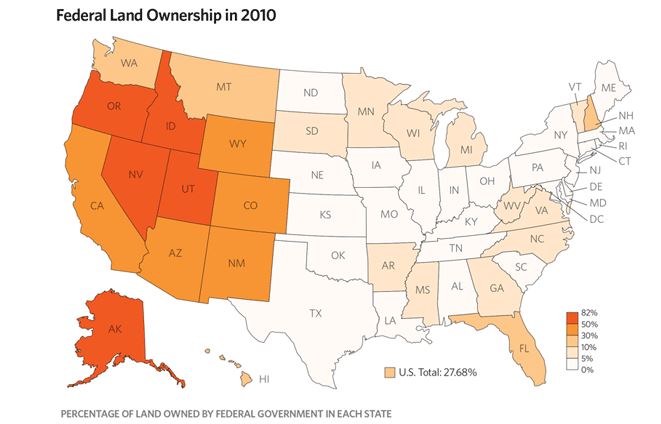A reliable electric system cannot be based on renewables. Every kilowatt of renewable generation must be backed up by a reliable source. In Colorado, that back-up comes from carbon emitting natural gas or coal. So, more generation from renewables means more carbon emissions.
Introduction by Editor
Energy has taken center stage in Colorado’s 2018 elections. Colorado progressives have grown increasingly detached from reality in matters of energy production and distribution, and their ongoing meltdowns over hydraulic fracturing and fossil fuels in general have resulted in some pretty absurd talking points.
Jared Polis, the California millionaire who migrated to Boulder and now serves in the U.S. House of Representatives, is currently running to be Colorado’s next governor. Ineffective, and with few, if any, legislative victories in D.C., Polis’ energy proposals will force Colorado to eschew ALL fossil fuel-generated power by the year 2040, with 100 percent reliance on renewables, such as wind and solar energy. The fact that in 2018 less than 5 percent of the state’s energy is produced by solar and wind, and that the majority of Colorado’s electricity is still generated in coal-fired power plants, hasn’t deterred Polis or other progressives in their nonsensical quest for absolute greenness.
Colorado’s Western Slope, which is blessed with more oil and gas reserves than Saudi Arabia could ever hope to have, is not immune from anti-fossil fuel politics. The race between Mike Mason (R) and Julie McCluskie (D) for the District 61 seat in State House, perfectly illustrates the clash between energy science and environmentalist ideology. In a recent blog post, Mason made the case for just how devastating anti-fossil fuel policies would be to Colorado.
The following was reposted with permission from the author, Mike Mason, a Republican candidate for the State House of Representatives from Gunnison, Colorado
Mike Mason is a physicist, farmer and businessman who believes in a balanced practical approach to energy policy. The goal of a sound Colorado electric power system is to provide consumers with electricity that is:
•Reliable — allows the lights go on every time the consumer hits the switch
•Affordable – provides reliable electricity at the least cost.
•Clean – minimizes adverse health and environmental impacts (carbon emissions and climate change are only one of the impacts of concern)
•Beneficial to the economy – maximizes the use of Colorado mineral and human resources
Julie McCluskie does not believe in an energy policy that balances these interests. She believes that the only goal of energy policy should be to transition from fossil electric generation to renewables generation, aligning herself with the renewables industry and leaders of her party like Jared Polis and Nancy Pelosi who have spent careers catering to special interests.
Regardless of what people think about climate change, the McCluskie approach:
•will have a negligible effect on carbon emissions and climate change
•will hurt consumers by increasing the cost of electricity and decreasing its reliability
•will cost taxpayers who will fund the transition from fossil to renewable electricity
•will benefit the renewables and natural gas industries
The problem with renewables is that they are intermittent power sources, only supplying electricity when the sun shines and the wind blows, not when consumers need it.
•Consumers need electricity 24/7, 100% of the time.
•Solar generates electricity no more than 20-40% of the time, and wind generates electricity 25-40% of the time.
•A reliable electric system cannot be based on renewables. Every kilowatt of renewable generation must be backed up by a reliable source. In Colorado, that back-up comes from carbon emitting natural gas or coal. So, more generation from renewables means more carbon emissions.
The $1.4 trillion global renewables industry is made up of powerful groups, all looking for taxpayer or government support either by renewable mandates or direct funding. These include:
•The wind industry ($14.1 billion annual US revenue), whose lobbyists have secured a federal production tax credit of 4¢/kilowatt-hour, a subsidy so large that wind generators can pay electric distributors to take electricity and still realize a profit. They have also convinced some states to mandate purchase of wind-generated electricity regardless of its or cost.
•The solar industry ($24.9 billion annual US revenue) is supported by a whopping 30% investment tax credit subsidy from taxpayers.
•The climate change consulting industry ($890 million annual US revenue) is made up of “climate scientists”, academics, journalists, policy advocates, and lawyers, mostly financed by taxpayers, advising government, industry and customers how to do the impossible: replace all the reliable, affordable fossil fuel generation with unreliable, expensive renewable generation and feel good about doing it. Growth in this industry is driven entirely by the government mandates and subsidies it gets from politicians like Julie McCluskie for.
•Wall Street. The solar and wind industries capitalize on tax credit subsidies they get from government by selling them to large financial institutions like Goldman Sachs and Morgan Stanley. Wall Street loves renewable tax credits.
•The oil and natural gas industry ($135 billion) annual US revenue) is happy to see government pushing construction of new wind and solar facilities, knowing that every kilowatt of new renewables generation will require a new kilowatt of new fossil generation.
The only loser in the McCluskie scheme to promote renewables is the coal industry. In Colorado the coal industry is a significant part of Colorado’s mining industry with its 57,000 jobs, $7 billion contribution to Colorado’s Gross Domestic Product and payment of $157 million in production royalties, half of which funds public schools. What is McCluskie’s plan for the damage done to the Colorado coal industry by her policy? Taxpayer funded subsidies for laid off workers. Of course.
Julie McCluskie lives in an energy fantasy world where intermittent generation sources that oftentimes produce zero power and produce power a maximum of 40% of the time can replace fossil generation — that currently provides Colorado with 83% of its electricity. Her approach will help the renewables pigs at the government trough, do nothing for the environment, cost consumers and taxpayers money, cost the state jobs and revenue, and risk power outages by relying on unreliable power generation from renewables.
*Emphasis added
Free Range Report
Thank you for reading our latest report, but before you go…
Our loyalty is to the truth and to YOU, our readers!
We respect your reading experience, and have refrained from putting up a paywall and obnoxious advertisements, which means that we get by on small donations from people like you. We’re not asking for much, but any amount that you can give goes a long way to securing a better future for the people who make America great.
[paypal_donation_button]
For as little as $1 you can support Free Range Report, and it takes only a moment.



